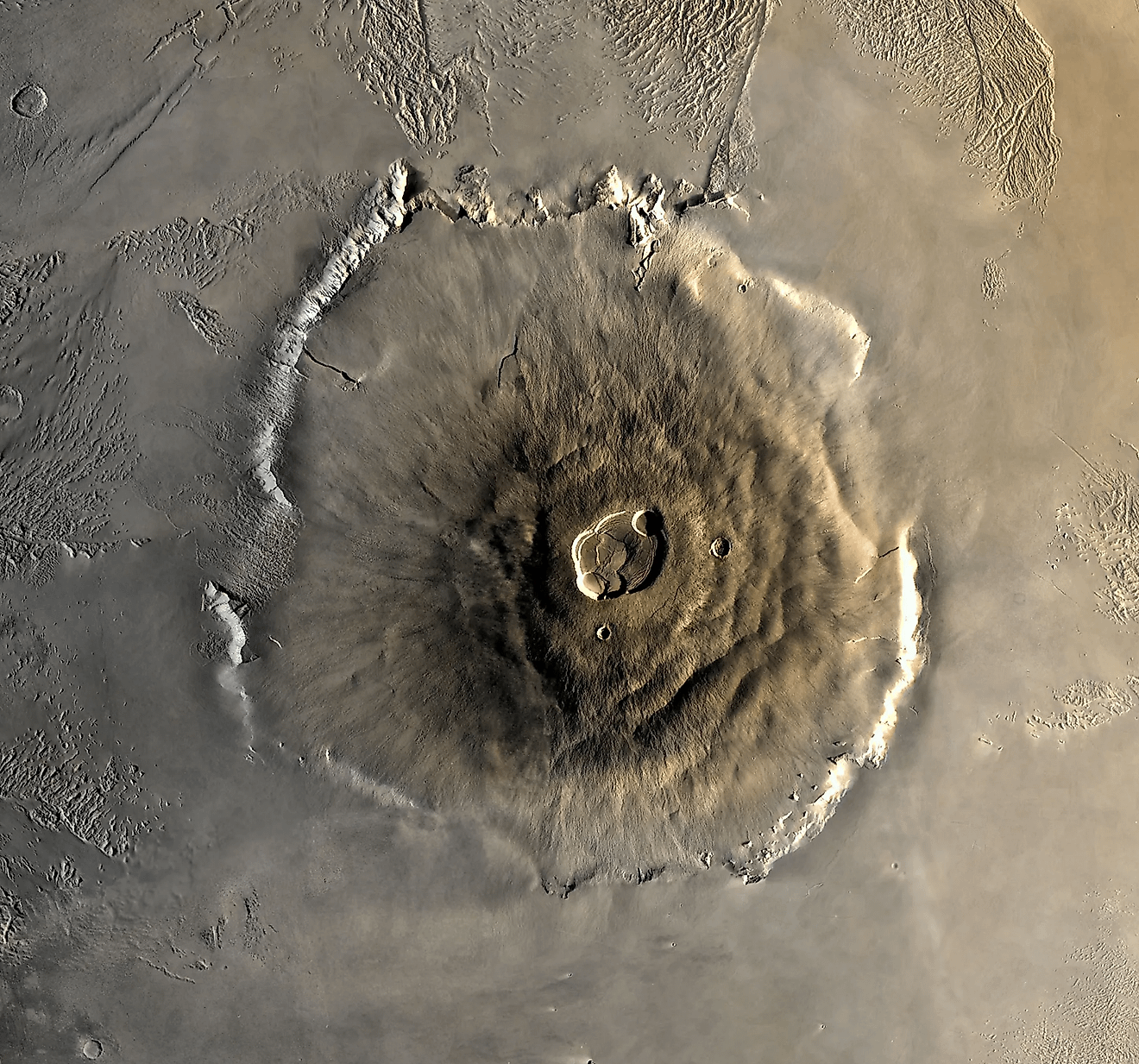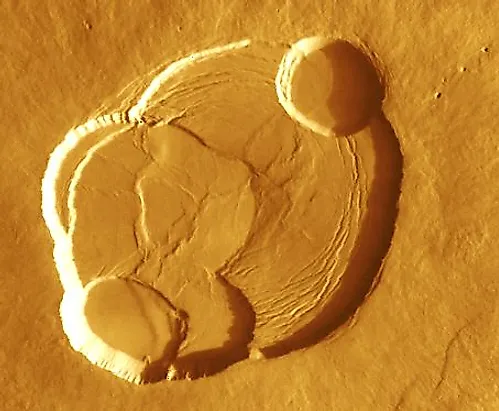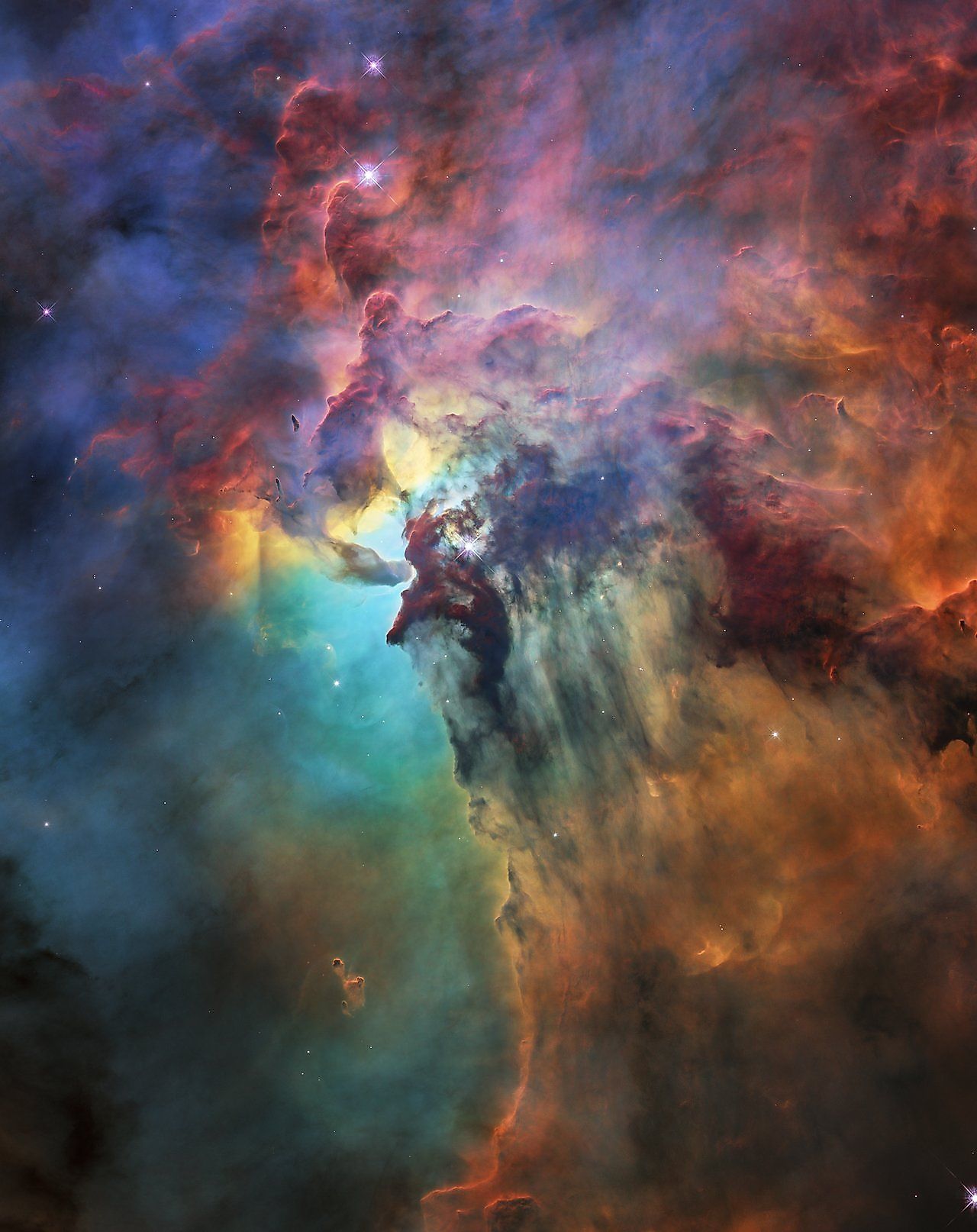The Largest Volcano In The Solar System

- Olympus Mons is the largest volcano on Mars and the largest in the solar system
- Olympus Mons is 72,000 feet (22,000 meters) tall, or two and a half times the size of Mount Everest
- Volcanoes on Mars grow so big due to a lack of plate tectonics and a low surface gravity
- Geologic evidence suggests Olympus Mons may still be active
Volcanic eruptions are a common occurrence on Earth, yet the presence of volcanoes is not unique to the Earth. All of the inner rocky planets, as well as a multitude of moons, have evidence of either past or current volcanic activity. On Earth, the largest volcano (and the largest mountain when measured from base to top) is Mauna Kea at 33,500 feet (10,210 meters) tall. That may seem tall, yet even the tallest mountains on Earth are tiny when compared to a particular volcano on Mars. Mars is home to the tallest volcano in the solar system, a behemoth called Olympus Mons. Standing at 72,000 feet (22,000 metres) tall, it is two and a half times the size of Mount Everest. Olympus Mons is 674 miles (324 kilometres) in diameter, making it roughly the same diameter as the state of Arizona. By area, Olympus Mons is 120,000 square miles (300,000 square kilometres), which is roughly the same area as Italy. Interestingly, despite its size, Olympus Mons is a relatively flat volcano. The slope of Olympus Mons averages at only five degrees. In fact, if you were to stand at the top of Olympus Mons, its lack of a steep slope and size would make it impossible to actually see any slope. Rather, it would appear as though you were standing on a flat surface instead of the solar system’s tallest mountain. All of these factors make Olympus Mons the largest known volcano in the solar system.
How Did Olympus Mons Get So Big?

Volcanoes on Mars are generally larger than those found anywhere else in the solar system. There are two primary factors that contribute to this: the low surface gravity of Mars and a lack of plate tectonics. Volcanoes on Mars form in pretty much the same way they do on Earth. Molten rock from the mantle is pushed upwards to form a mountain, with a vast system of tubes connecting the mountain to the magma in the planet’s interior. However, there is one major difference between the Earth and Mars. The Earth’s crust is broken apart into separate plates, which in turn drift across the surface as partially molten rock flows beneath the crust. This process is called plate tectonics. Beneath the crust, within the mantle, there exist stationary hotspots that result in the formation of volcanoes. These hotspots actively spew magma from the mantle to the surface, forming a volcano in the process. Since the crust is constantly in motion, one hotspot will often form multiple volcanoes as the crust moves away. You can think of it as a kind of conveyor belt, wherein magma rises to the surface, forms a volcano, and then the crust moves that volcano away and allows for the formation of another volcano. This is what happens on Earth, yet Mars is a different story. The Martian crust is not broken up into separate plates, and so Mars does not experience any plate tectonics. Therefore, both the hotspot and the crust above it are stationary. A single hotspot on Mars will simply keep adding material to the same point on the crust, resulting in the formation of a single, gigantic volcano. Furthermore, the low surface gravity of Mars allows volcanoes to grow to a much larger size over a shorter period of time than on Earth. Olympus Mons is a type of volcano called a shield volcano. Rather than forming from massive eruptions, shield volcanoes form as lava flows from the top of the volcano to its base, eventually solidifying and causing the volcano to grow in size.
Is Olympus Mons Active?
If Olympus Mons were to ever erupt, it would be unlike anything we have experienced on Earth. As of yet, scientists do not know if Olympus Mons is active or not. Data from nearby lava flows suggest that Olympus Mons experienced small eruptions as recently as two million years ago, which is exceptionally short in geologic terms. This suggests that Olympus Mons may still be partially active, yet it is unknown whether not it will ever experience a large-scale eruption in the future.











